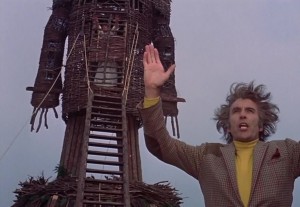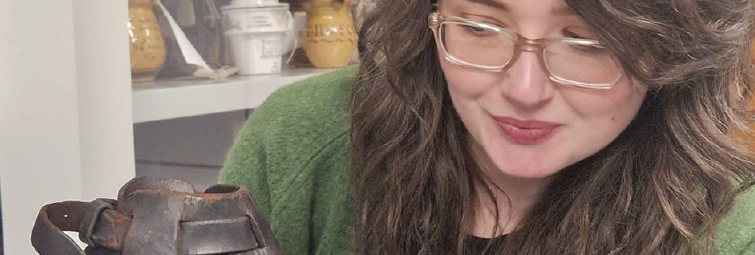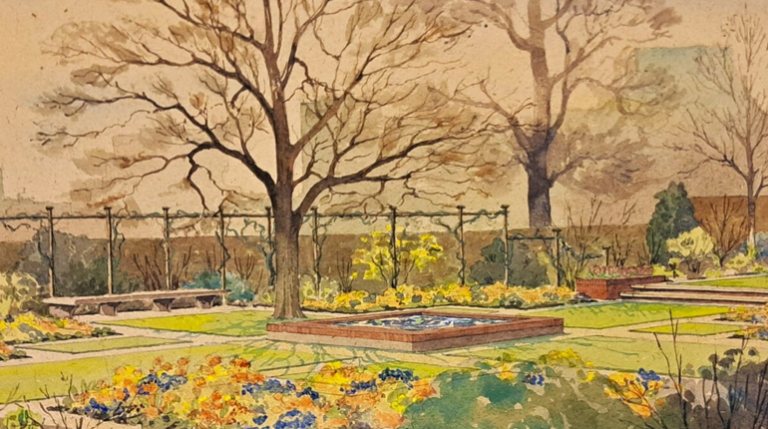Stereotypes and slaughter: Why are horror films set in the countryside?
-
Author
- Alison Hilton
-
Published Date
- October 29, 2014
<<<<<Written by Adam Koszary, Project Officer for Our Country Lives.

The countryside is terrifying.
When you’re not being offered as human sacrifice you’re either being forced to knife-fight your own wife and son to the death, getting eaten by the local wildlife or being pushed off a cliff by a psychotic caravaner from Redditch.
Or, at least, this is what the film industry would have you believe. The countryside has often provided fertile ground for all things murderous, horrible and supernatural on the silver screen, playing on the stereotypical urbanite fear of our myth-ridden landscape, where the nearest policeman is a hundred miles away and nobody knows what a cappuccino is.

At this time of year there is a predictable crop of Halloween films, but why does the countryside in particular awaken the primeval and the superstitious in us? Here at MERL we’re not short of sinister objects and ghosts of the past – for instance, the Grim Reaper would feel at home in our collection of scythes; our numerous animal (and human) traps have seen countless final squeaks and gasps; smocks and shoes of the long-dead hang hang quietly upstairs; we have slaughter hooks, carcass hangers, guns and docking knives. Even our sickles have seen thousands of tiny deaths in fields of wheat. Our collection reflects how the countryside revolves around death as much as it does around life, and much of the rural economy exploits the life cycle of animals and crops to provide food and clothing for us all.
Apart from this proximity to the life-cycle, another reason could be the pagan heritage of our Celtic fringes which still lingers in both remote communities (The Wicker Man) but also in national traditions (i.e. May Day). There are the practical reasons, such as how it tends to be darker and sparsely populated. In fact there is a unique feeling of isolation in the countryside, keenly felt in a nation where c.90% of people live in cities. Another element is how myth and legend are often rooted in our rural past, be it the derivation of Jack o’ Lanterns from Somerset will o’ the wisps, werewolves in the woods, giants in the mountains or pixies at the bottom of your garden. And of course, there is ‘the other’ – the classic stereotype of people referred to in TV’s League of Gentleman as ‘locals’, who, as you step into a candlelit country pub, turn to stare at you as the needle scratches off a record. It does not matter that these ideas are outdated or untrue, they remain stereotypes to be exploited.

Whatever the inspiration for a rural horror film, however, there is usually one common theme: that the stranger, usually an urbanite, ends up dead. Sometimes they don’t deserve it and sometimes they do, but often their death is due to offending the morals or way of life of a rural community (or sometimes vice versa, as in Straw Dogs). This is particularly the truth in newer films such as Sightseers, which exploits this idea of moral killing which lays at the heart of most modern horror films. In place of traditional myth and legend, of hubris and nemesis, we now have the moralising horror movie where protagonists are struck down for their sins. The countryside is seen in some movies as a place where a more enduring idea of right and wrong persists, whether it takes the form of the pagan community of The Wicker Man or a community desperately trying the preserve an imagined way of life, such as in Hot Fuzz.

I would, however, argue that British rural horror films are almost unique; the far more popular and populous American genre is often based on hillbilly brutality, Bigfoot and other myths. The British genre, however, can draw on centuries of rural life, myth and legend that stretch back to the medieval period. At the root of it all, I think, is the idea of the countryside being where you can get ‘back to nature’ or, to put it another way, to return to the savage state of nature. Put on a layer of centuries-old stereotypes, regional rivalry and an increasing disconnect between city and country and we have our modern fear of fields and ‘locals’. Never mind how they bear little relation to reality.






